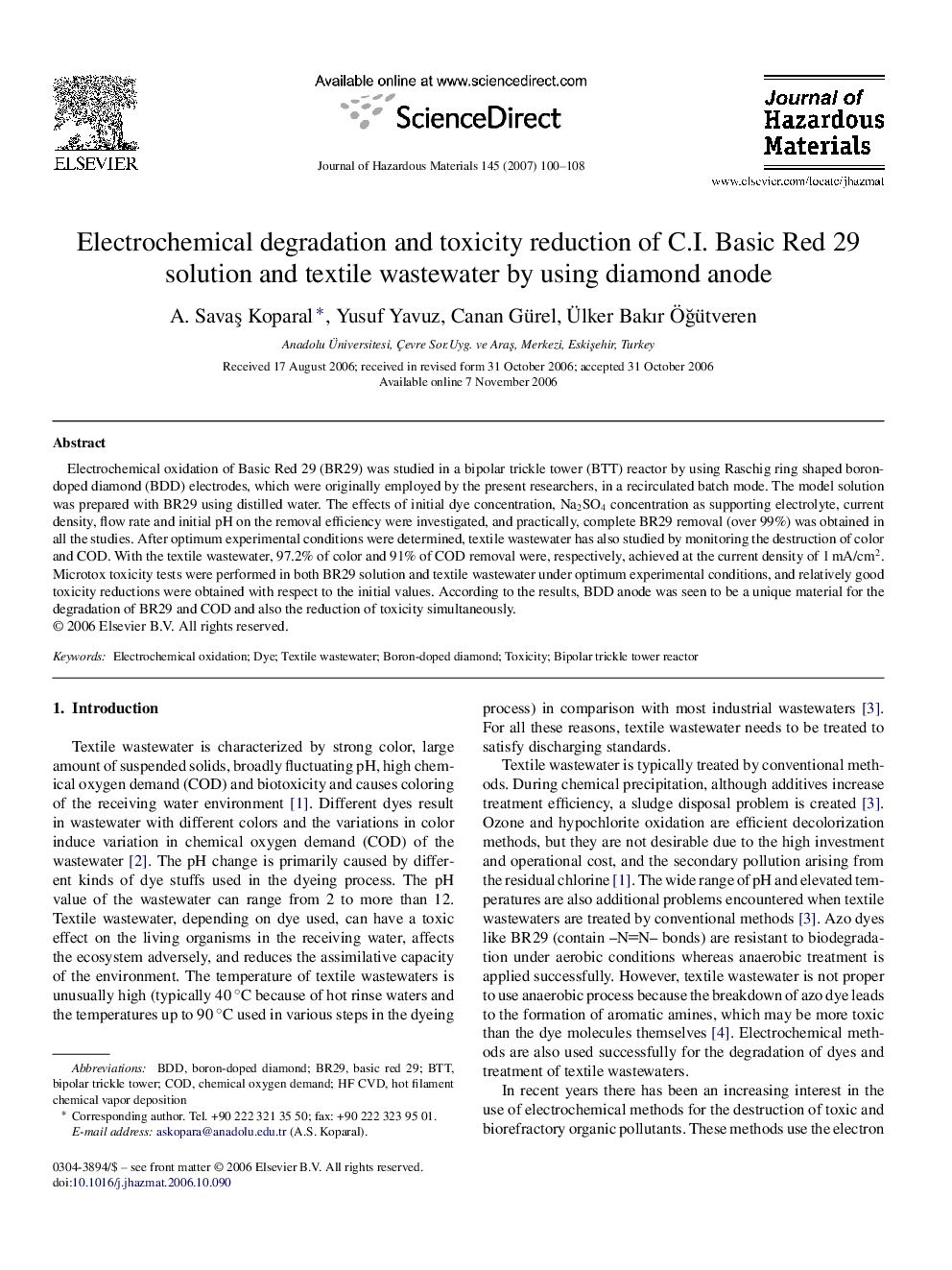| Article ID | Journal | Published Year | Pages | File Type |
|---|---|---|---|---|
| 584231 | Journal of Hazardous Materials | 2007 | 9 Pages |
Abstract
Electrochemical oxidation of Basic Red 29 (BR29) was studied in a bipolar trickle tower (BTT) reactor by using Raschig ring shaped boron-doped diamond (BDD) electrodes, which were originally employed by the present researchers, in a recirculated batch mode. The model solution was prepared with BR29 using distilled water. The effects of initial dye concentration, Na2SO4 concentration as supporting electrolyte, current density, flow rate and initial pH on the removal efficiency were investigated, and practically, complete BR29 removal (over 99%) was obtained in all the studies. After optimum experimental conditions were determined, textile wastewater has also studied by monitoring the destruction of color and COD. With the textile wastewater, 97.2% of color and 91% of COD removal were, respectively, achieved at the current density of 1Â mA/cm2. Microtox toxicity tests were performed in both BR29 solution and textile wastewater under optimum experimental conditions, and relatively good toxicity reductions were obtained with respect to the initial values. According to the results, BDD anode was seen to be a unique material for the degradation of BR29 and COD and also the reduction of toxicity simultaneously.
Keywords
Related Topics
Physical Sciences and Engineering
Chemical Engineering
Chemical Health and Safety
Authors
A. SavaÅ Koparal, Yusuf Yavuz, Canan Gürel, Ãlker Bakır ÃÄütveren,
